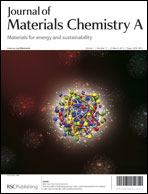We report a simple synthetic method and the unique properties of four types of individual NPs that are well-dispersed in polyelectrolyte complexes (PECs) from the core to the shell without the formation of alloy or core–shell NPs. Additionally, this result cannot be achieved by conventional methods. By mixing and heating PEs with metal precursors, individual metal NPs stabilized by PEs were synthesized. The four types of individual metal NP-containing PECs were prepared by mixing anionic and cationic PEs involving individual metal NPs. The individual metal NPs were homogeneously distributed within the polymer particles, and their contents were easily tuned by varying the loading fractions of the individual metal NP-containing PEs. The as-obtained PEC–Au/Pt/Ag/Pd (separate entities) exhibited promising performance for surface enhanced Raman scattering (SERS) and catalytic activities, which was further enhanced when the four types of metals demonstrated different optimal composition in comparison to the mixed types, such as the alloy or core–shell NPs. Our results also show that it is necessary to tune the types or individual metal contents of the multi-metallic complexes (individual, alloy, or core–shell) for the control or application of certain properties.

You have access to this article
 Please wait while we load your content...
Something went wrong. Try again?
Please wait while we load your content...
Something went wrong. Try again?


 Please wait while we load your content...
Please wait while we load your content...